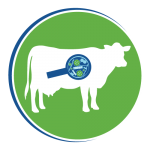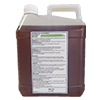
Antimicrobials – Cattle
For almost century, antimicrobials have played a vital role in treating bacterial infections in humans and animals and, in doing so, have saved many lives. While there are many different groups of antimicrobials available to use e.g. penicillin, macrolides, fluoroquinolones, etc. the ability of bacteria to develop resistance to them is a very relevant threat to their efficacy. This is seen especially where antimicrobials are used extensively for long periods of time to control or prevent disease outbreaks in food producing animals. This resistance can then also be transferred to bacteria that cause disease outbreaks in humans e.g. Salmonella infections.
When the use of antimicrobials is needed for treatment or control of bacterial diseases, it is important to choose the most appropriate product rather than the newest and broadest spectrum active ingredient available and then ensure that it is correctly administered i.e. formulation, dosage, length of administration, etc. Not all the antibiotics are effective against all bacteria, some are classified as broad spectrum (works again a broad range of bacteria) and narrow range (works only on a small group of bacteria). Antibiotics can either be bacteriostactic (prevent growth of bacteria) or bactericidal (kill bacteria). The efficacy of any antimicrobial is based on the correct usage.





